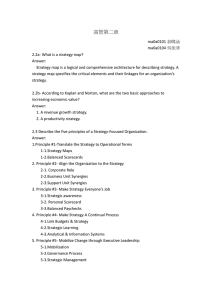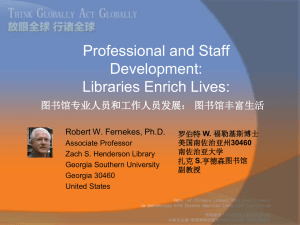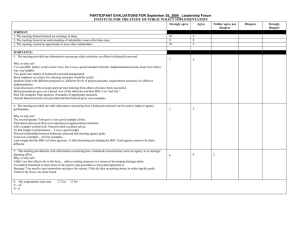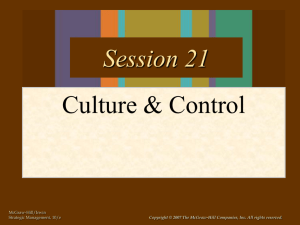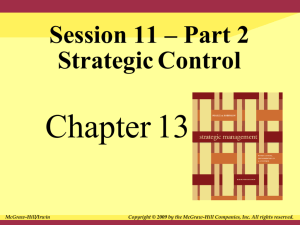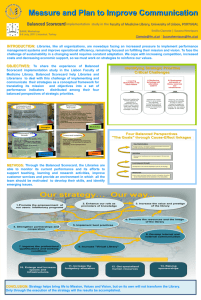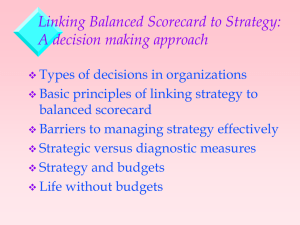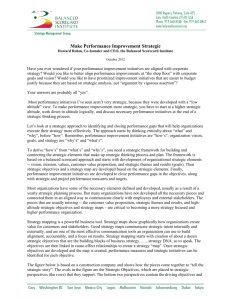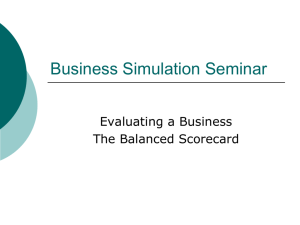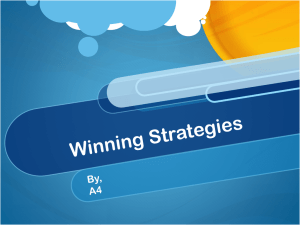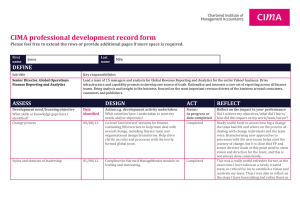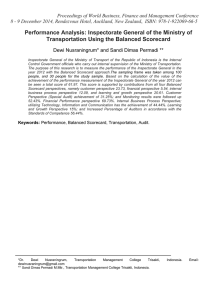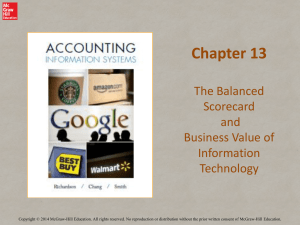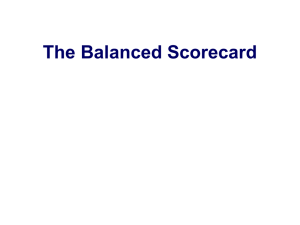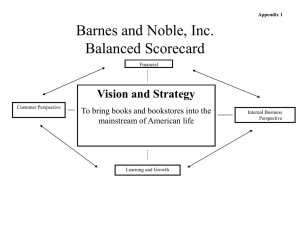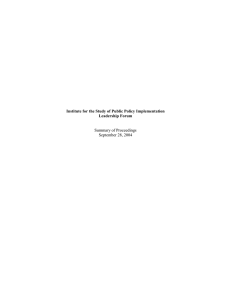Session 2 Leadership in Organizational Change
advertisement
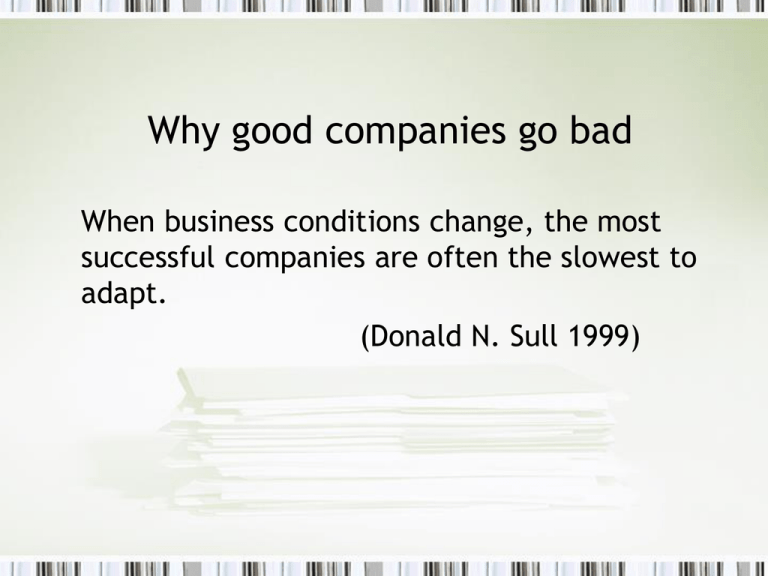
Why good companies go bad When business conditions change, the most successful companies are often the slowest to adapt. (Donald N. Sull 1999) Session 7 Managing Organizational Change: Strategies Revisited Topics for Today • Reflections on EIS simulation • Strategies for change – The implementation process – Balanced scoreboard • Why good companies go bad? – Structural inertia – Growth and strategic changes • Conclusions The implementation process • A series of issues: – Top-down vs. bottom-up – Cultural vs. structural – Intrinsic vs. extrinsic motivation • A systematic change program • The importance of implementation Problems in implementation • Examples – The Smithers example – Police in New York state • Why? – – – – Interests and interpretation Past experience and interpretation Competition for attention Multiple pulling/pushing forces in different directions – Implementation as a continuation of decision making Balanced scorecard • What is balanced scorecard – Beyond single measure – Generate balanced attention to important aspects • Video • But the experience at a large consumer bank… Balanced Scorecard at a large consumer bank • The context – The CEO’s intension – The implementation: HRM – regional office – branches – The academic conference • Problems in implementation – Complex system of multiple indicators – Implementation through bureaucracies – Subjective versus objective measures • Lessons – Implementation with results (Schaffer and Thomson 2000) • Why results-driven, not activity centered? – – – – Keep the eyes on the ball Discourage symbolic compliance Push out of the comfort zone Establish early wins • Provide clear goals and mobilize resources to carry out the change program – Get resources/support ready – Get employees involved – Insert deadlines and demand measurable outcomes Case study: Lincoln Electric in China Background • Lincoln Electric as a model of pay for performance – Measurable goals – Intensity of incentive plan – Remarkable results • Does this model work for other industries or other lines of work? • What are the implications for international management? Questions for discussion • How does LE’s management style and incentive design fit the Chinese context? • What is your view of LE’s efforts in its setup process in China? Would you do anything differently? Why? • What is your recommendation for the next step? Summary and Conclusion Question revisited: Why do large, successful companies fail? The case of Intel • Background: Industry dominance • The changing environment – Multimedia beyond computing chips • Why failure? – Confined to expertise within own company • The change of strategies – From speed to new markets – Challenges from competitors: A.M.D., Microsoft. Overview of the course Strategic Culture design Leadership Agents Recipients Politics Sharing experience: What is your main lesson about managing organizational change? Why good companies go bad? (Donald N. Sull 1999) • It is not paralysis, not unawareness, not inaction. • The inability to take appropriate action • Active inertia – tendency to follow established patterns of behavior, even when environment changes. • Example: the Firestone Tire and Rubber Co. – – – – Dominant position in the early 1970s Response to Michelin’s radial tire – old standards Delay in phasing out bias tires Lost market shares and dominance in the industry Sources of active inertia • Structure and interests – Ford’s T-model • Organizational filtering and interpretation – The pooling of experience • Competence trap • In the time of change, past success can become obstacle: – – – – Strategic frames blinders Processes routines Relationships Shackles Values Dogmas For mid-level managers • Be clear what role you want to play – Change agent? – Entrepreneurial managers, early adopter, catalyst? – Imitator, follower? • Invest in your social capital – Different networks for different purposes – Mobilize resources • Protect your interests – Build coalitions – Be adaptive • Happiness belongs to optimists! About final examination • Format of examination: – Essay questions (choose three of four) • Discussion on business scenarios • discussion on key issues/lessons in organizational change • Contents to be examined: – Cases discussed in class – Key readings assigned for reading – Issues discussed in class Thank you and enjoy the final exam!
